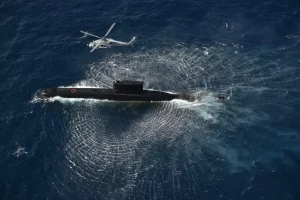India’s defense sector has witnessed significant modernization and expansion over the past few years, driven by key defense deals and the induction of advanced equipment. The Government of India’s focus on strengthening the country’s military capabilities, along with the push for indigenization under the “Atmanirbhar Bharat” initiative, has led to substantial developments. This article outlines some of the major defense equipment inducted recently and the notable defense deals that will shape the country’s future military power.
AFCAT 1 2025: Induction of Major Defence Equipment & Defence Deals
Major Defence Equipment Inducted
1. Rafale Fighter Jets
- Country of Origin: France
- Deal: India signed a deal with Dassault Aviation for 36 Rafale fighter jets in 2016, which have since been inducted into the Indian Air Force (IAF).
- Significance: The Rafale, equipped with advanced avionics, radar systems, and long-range Meteor missiles, enhances the IAF’s capability for air dominance, deep strike missions, and precision targeting. The jets played a role in bolstering India’s deterrence posture along the Line of Actual Control (LAC).
2. INS Vikrant (IAC-1)
- Country of Origin: Indigenous (India)
- Deal: Designed by the Indian Navy’s Directorate of Naval Design and constructed by Cochin Shipyard Limited (CSL), INS Vikrant is India’s first indigenously-built aircraft carrier.
- Significance: The induction of INS Vikrant into the Indian Navy marks a major milestone in India’s push for naval power. The 45,000-tonne carrier enhances the Navy’s blue-water capabilities and provides a platform for deploying aircraft, helicopters, and conducting amphibious operations.
3. S-400 Triumf Missile System
- Country of Origin: Russia
- Deal: India signed a $5.43 billion deal with Russia in 2018 for five units of the S-400 air defense missile system.
- Significance: The S-400 is a state-of-the-art surface-to-air missile (SAM) system capable of engaging multiple targets at long ranges (up to 400 km). It is designed to intercept aircraft, UAVs, and ballistic missiles. The system greatly enhances India’s air defense network and strengthens its capability to neutralize aerial threats.
4. P-8I Poseidon Maritime Patrol Aircraft
- Country of Origin: United States
- Deal: India has acquired 12 P-8I aircraft from Boeing, with an additional order for more units placed in 2021.
- Significance: The P-8I Poseidon, operated by the Indian Navy, is a long-range maritime reconnaissance and anti-submarine warfare (ASW) aircraft. Its advanced sensors, radar systems, and anti-ship missiles enhance India’s maritime surveillance and sea-denial capabilities in the Indian Ocean Region (IOR).
5. Apache AH-64E Attack Helicopters
- Country of Origin: United States
- Deal: India signed a deal with Boeing for 22 Apache helicopters, with the deliveries completed by 2020.
- Significance: The Apache helicopters, equipped with Hellfire missiles, advanced targeting systems, and precision-guided munitions, provide the Indian Army and Air Force with a formidable attack capability. These helicopters play a vital role in anti-tank warfare, close air support, and counter-insurgency operations.
6. K9 Vajra-T Self-Propelled Howitzers
- Country of Origin: Indigenous production in collaboration with South Korea
- Deal: India signed a deal with South Korea’s Hanwha Defense for 100 K9 Vajra-T howitzers, which are now manufactured in India by Larsen & Toubro.
- Significance: The K9 Vajra-T is a self-propelled, tracked artillery system with a 155mm/52 caliber gun. It provides high mobility and firepower in mountainous terrain, enhancing the Indian Army’s artillery firepower along critical borders.
Key Defence Deals
1. India-Russia Defence Deals (2021-2023)
- Deals Signed: Besides the S-400 system, India has deepened its defense cooperation with Russia through deals for AK-203 assault rifles and additional military equipment.
- AK-203 Assault Rifles: India and Russia entered a joint venture to manufacture 600,000 AK-203 rifles at the Korwa Ordnance Factory in Uttar Pradesh. These rifles will replace the aging INSAS rifles in the Indian Army.
- T-90S Battle Tanks: India has ordered additional T-90S tanks from Russia to bolster its armored capabilities, particularly along the Western border.
2. Tejas Mk1A Fighter Jets
- Country of Origin: Indigenous (India)
- Deal: The Indian Air Force placed an order for 83 Tejas Mk1A Light Combat Aircraft (LCA) from Hindustan Aeronautics Limited (HAL) worth $6.25 billion.
- Significance: The Tejas Mk1A is an advanced version of the Tejas LCA, featuring improved radar, avionics, and electronic warfare capabilities. This deal marks a major boost to India’s indigenous defense manufacturing capabilities.
3. India-France Rafale and AIP Submarine Deals
- Deal Expansion: Beyond the Rafale jets, India and France have extended their defense ties with deals on submarines and strategic equipment.
- Air-Independent Propulsion (AIP) Submarines: Under the Project P-75I, India is expected to acquire six AIP-enabled submarines to enhance the Indian Navy’s underwater endurance capabilities. The AIP system allows submarines to remain submerged for longer durations without surfacing.
4. MQ-9B Sea Guardian UAVs
- Country of Origin: United States
- Deal: India is in the process of acquiring 30 MQ-9B Sea Guardian drones from the U.S. for maritime surveillance and reconnaissance.
- Significance: These drones will enhance the Indian Navy’s situational awareness in the Indian Ocean Region and provide real-time intelligence, surveillance, and reconnaissance (ISR) capabilities.
5. HAL & Guyana Defence Force Deal
- Country of Origin: Indigenous (India)
- Deal: Hindustan Aeronautics Limited (HAL) signed a deal with Guyana for the delivery of helicopters to support their defense forces. This marks India’s growing role in defense exports and cooperation with foreign countries.
Focus on Indigenization and Self-Reliance
India’s defense strategy has shifted towards promoting self-reliance and indigenization. The Atmanirbhar Bharat Abhiyan encourages domestic defense production, aiming to reduce dependence on foreign imports. Key initiatives include:
- Defence Research and Development Organisation (DRDO): DRDO is playing a vital role in developing indigenous missile systems like Agni, BrahMos, and Pralay, as well as technologies for fighter jets, drones, and naval equipment.
- Strategic Partnership Model: India’s defense procurement policy emphasizes partnerships between Indian private sector companies and foreign Original Equipment Manufacturers (OEMs) to boost indigenous production.
Conclusion
India’s defense sector is undergoing a transformation, driven by the induction of cutting-edge equipment and strategic defense deals with major global powers. The modernization of India’s armed forces, along with a focus on self-reliance through indigenous production, ensures that the nation is well-prepared to handle emerging security challenges.
AFCAT 1 2025 aspirants should stay updated on these defense developments, as they are key components of the General Knowledge section. Understanding India’s defense capabilities will not only help you succeed in the examination but also provide insights into the country’s growing stature as a military power on the global stage.




















